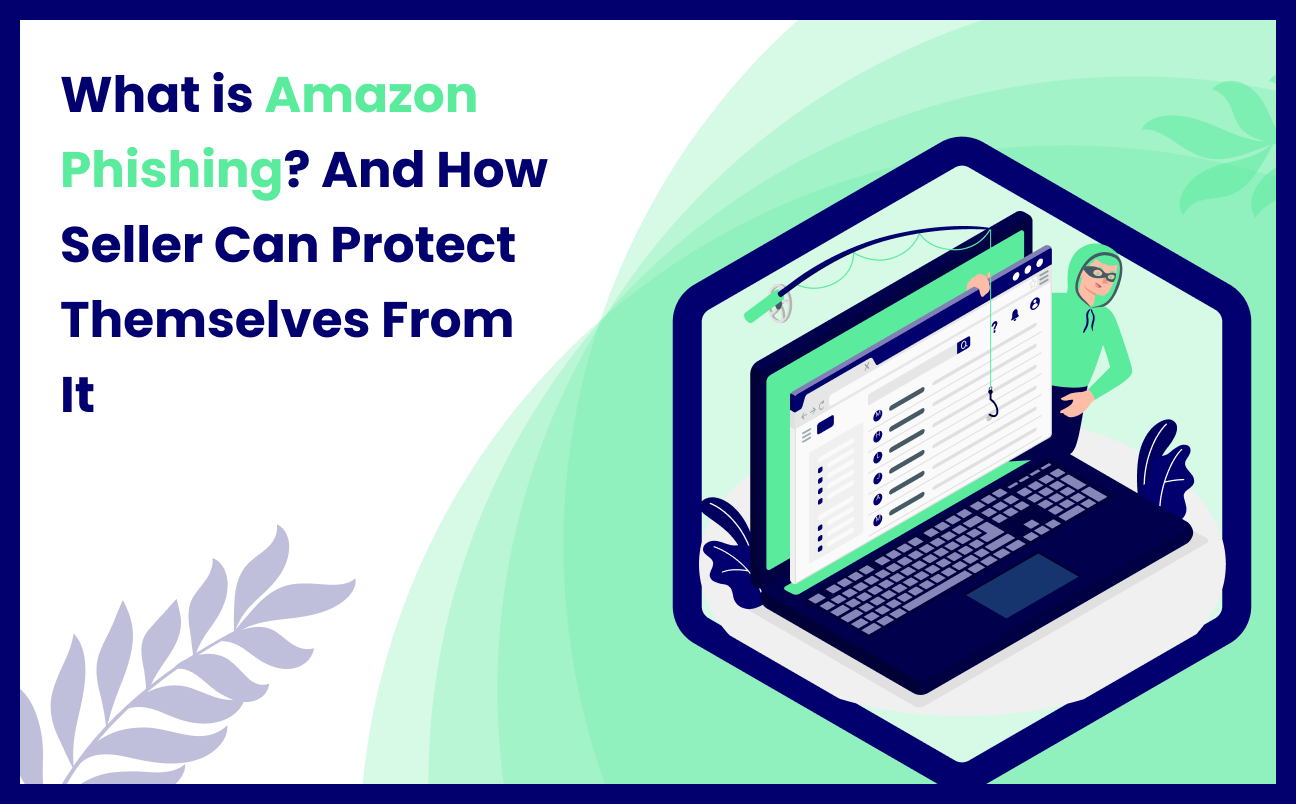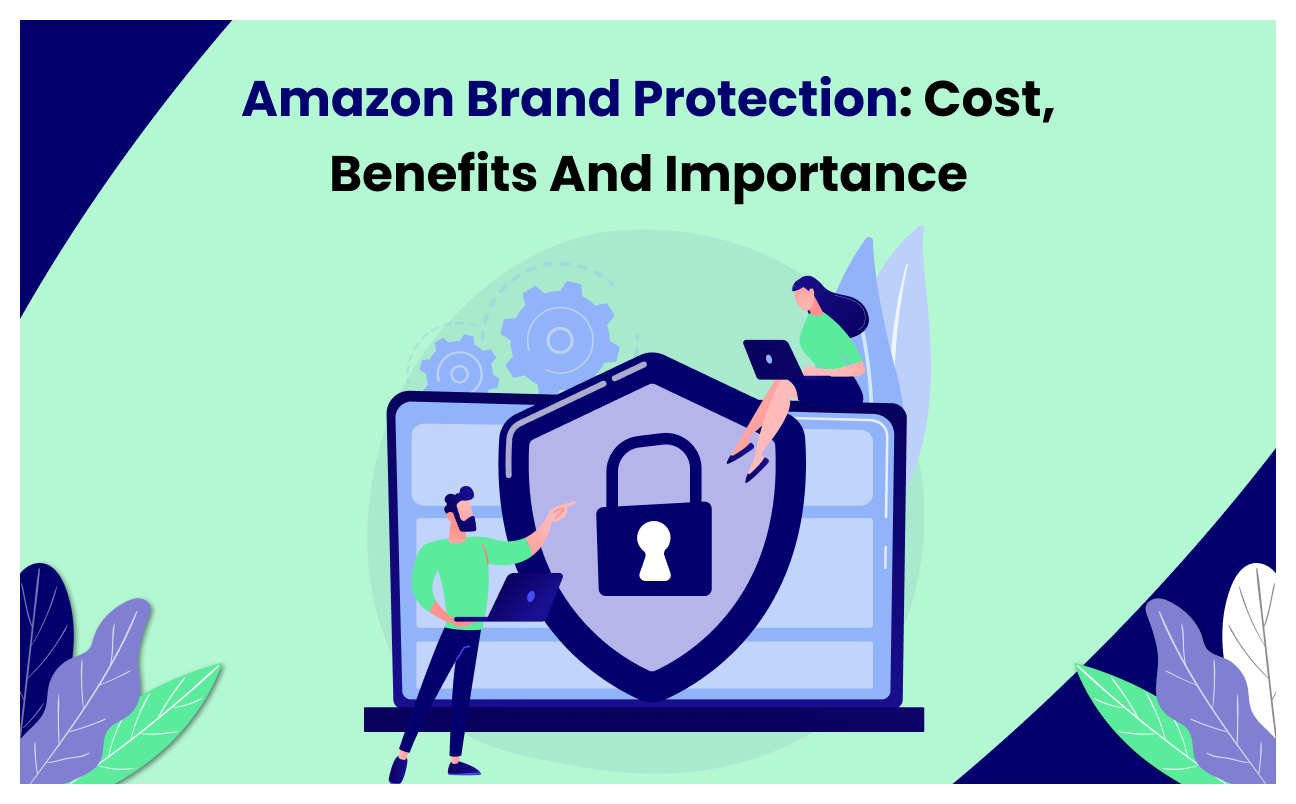Amazon is the most often targeted online marketplace. Statista Research indicates that online retail fraud grew by 30% in 2020. Phishing is one of the most popular ways for cybercriminals to obtain personal and financial information from Amazon vendors. Amazon phishing attacks are pretty successful. It is believed that 1 in 5 phishing emails sent to unwary victims successfully collect their personal information. Working with trustworthy Amazon account management services can assist you in identifying and minimizing potential hazards is essential. These services may offer knowledgeable advice on safeguarding your account, keeping track of your seller metrics, and adhering to Amazon’s rules and regulations.
Understanding the dangers of phishing as an Amazon seller is essential, as it helps take precautions to safeguard your account and company. By implementing these tactics, you can guard your company against the catastrophic effects of phishing schemes and ensure that your Amazon account is lucrative and safe. This post will cover the topic of Amazon phishing, including its operations and how to safeguard your account and stay ahead of cybercriminals.
What is Amazon Phishing?
The term “Amazon phishing” describes a particular kind of cyberattack in which fraudsters send phony emails or texts that pretend to be from Amazon or a reputable merchant on the marketplace to deceive victims into revealing their personal and financial information. To update account information or access a fake Amazon login page, phishing emails or messages frequently ask recipients to provide their login details or other personal information. Fraudsters use this information to steal money, acquire identities, or carry out more fraud. Before replying or submitting any personal information, it is crucial to be watchful and wary of such phishing efforts and to confirm the legitimacy of any emails or communications from Amazon.
What are the Characteristics of an Amazon Phishing Email?
Phishing emails from Amazon can resemble a variety of ways. Still, they frequently include components intended to mimic communications from Amazon to deceive recipients into divulging personal information. Here are a few traits that phishing emails from Amazon frequently have:
- Urgent or Threatening Language: A sense of urgency or dread may be used in phishing emails to persuade the target to act immediately. For instance, the email may warn the victim that their account is compromised or that they must update their information immediately to avoid repercussions.
- Suspicious Links or Attachments: Links or files that seem to come from Amazon but go to malware or phony login pages are a common feature of phishing emails. The file names or extensions on these links or files can be strange.
- Impersonation of Trusted Entities: Phishing emails may seem to come from Amazon or a reputable vendor, but the sender’s email address or URL may be slightly different or misspelled.
- Requests for Personal Information: Frequently, phishing emails ask for sensitive data like credit card information, login information, or other personal information.
It’s crucial to be watchful and suspicious of emails or communications that claim to be from Amazon or a reputable merchant on the marketplace to avoid falling for Amazon phishing scams. By reviewing the sender’s email address, URL, and message content, you should always confirm the legitimacy of an email or message before responding with personal information. To protect your account directly, accessing the Amazon website and logging in is safer than clicking on links in emails or texts.
How do Phishing Frauds Target Amazon Merchants?
Amazon is a data repository that houses all the vital data and specifics about its users and the platform’s vendors. As was noted, these phishing schemes prey on Amazon sellers to obtain their login credentials and acquire information on their financial accounts and other data.
Additionally, scammers try to obtain consumer information via seller accounts. Vendors are prime candidates since it takes a long time to get their money back or reverse the impacts of phishing. When individuals file complaints and notify Amazon of the fraud, their money’s gone, and they can no longer log into their Amazon Seller accounts. It leads to significant losses for vendors because the redemption procedure as a whole requires more time and offers less security.
If you’re an Amazon seller, paying attention to any signs of concern in the emails mentioned earlier is crucial. Sellers must exercise caution and thoroughly inspect any links in emails given to them, as well as the return addresses. A simple way to check out links is to hover over them without clicking. If you closely investigate, you can notice that such links lead to a bogus website.
How can Amazon Sellers Defend Against Phishing?
Amazon sellers may take several precautions to guard against phishing scams:
- Be Vigilant and Cautious: Watch for possible phishing scams and be wary of any unusual or odd communications or demands. They should always double-check the sender’s identity before responding to any emails or messages claiming to be from Amazon or a customer. They should never provide critical information unless they are positive the request is genuine. If you need to verify if any modifications are necessary, accessing Seller Central is a straightforward solution.
- Enable Two-Step Verification: Amazon provides two-step verification for seller accounts, which ups the login procedure’s security. To prevent unauthorized access to their accounts, sellers should enable this option.
- Use Strong Passwords: Sellers should choose secure, one-of-a-kind passwords that they change frequently. Additionally, they should refrain from using the same password across many accounts, as doing so raises the possibility of a security breach.
- Regularly Update System and Software: To avoid malware attacks and other security breaches, sellers should update their systems and software with the most recent security patches and upgrades.
- Sellers Must Educate Themselves and Their Employees: Sellers must inform themselves and their staff about phishing scams and how to spot and stay away from them. In addition to Amazon’s tools and instructions for identifying and reporting phishing schemes, sellers can also look for extra training or assistance from security professionals.
Suppose you are a seller who has fallen victim to a phishing scam. It’s crucial to contact Amazon’s customer service immediately and confirm that you have taken all the necessary measures to safeguard your account and data. By following these precautions, Amazon sellers may help defend their companies and themselves from phishing schemes and other security dangers.
How to Report Amazon Phishing Emails?
It is a subject that many merchants frequently ask. The method is straightforward to follow. Amazon recommends that you report phishing emails that appear to be from them. Simply write an email to halt-spoofing@amazon.com to discontinue the practice. To make it simpler for Amazon to identify the origin of the phishing assault, include the phishing email when delivering this email to guarantee that all of the data in the header is there.
Imagine if the phishing attempt was made via phone. In that case, you must report it and complete the form provided to give Amazon all the necessary information and facts to ensure they can respond appropriately.
Lastly
Sellers on the Amazon platform face danger from phishing, so it’s critical to take preventative measures to safeguard your account and your company. You may reduce your chance of falling for a phishing scam by being cautious, activating two-step verification, using strong passwords, maintaining software and systems, and educating yourself and your staff.
Consider working with a reputable e-commerce company like HRL Infotechs if you seek expert advice and assistance in maintaining and safeguarding your Amazon account from phishing and other security risks. We can also assist you in optimizing your listings, increasing sales, and staying one step ahead of the competition, thanks to our established knowledge of Amazon account management services and our status as an ecommerce advertising agency. Contact us now to know more about how we can help you achieve your Amazon business objectives.


